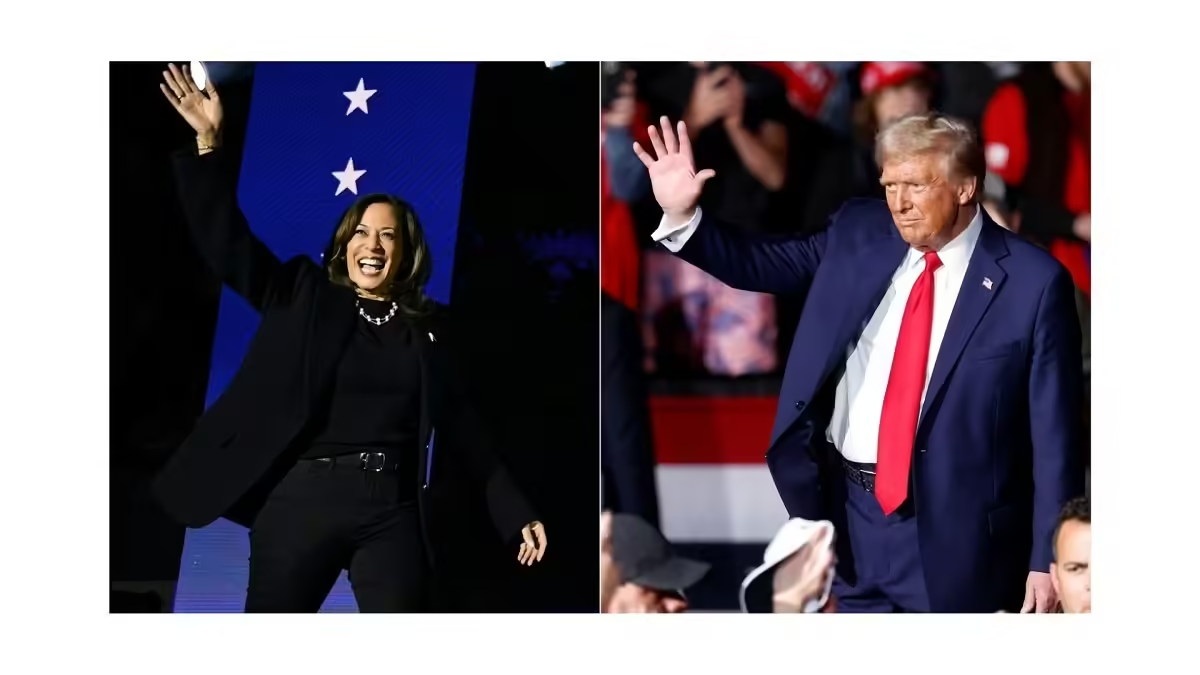Kamala Harris and Donald Trump: Contrasting Visions for America

Kamala Harris and Donald Trump, both prominent figures in American politics, represent two markedly different perspectives on leadership, policy, and the future of the United States. As they continue to shape the political discourse, their differing approaches highlight the ideological divide in the country, which influences policies ranging from healthcare to immigration and economic strategy. Here’s a closer look at their distinct approaches and how they resonate with different sectors of the American public.
Backgrounds and Political Ideologies
Kamala Harris, the first woman, first Black, and first South Asian Vice President of the United States, has had a career rooted in law and public service. Before becoming Joe Biden’s running mate, Harris served as the Attorney General of California and later as a U.S. Senator, where she built a reputation for her focus on criminal justice reform, civil rights, and healthcare. Her views tend to align with the progressive wing of the Democratic Party, though she has also shown moderate tendencies on certain issues.
Donald Trump, on the other hand, rose to prominence as a real estate developer and television personality before entering politics. He became the face of the populist conservative movement during his 2016 presidential campaign and presidency, emphasizing “America First” policies that prioritized national interests, a strong stance on immigration, deregulation, and economic nationalism. His political style is characterized by bold, sometimes controversial rhetoric, and a focus on appealing directly to his supporters.
Healthcare Policies
Healthcare remains a contentious issue, and both Harris and Trump have starkly different views on how to approach it. Harris has long advocated for expanding healthcare access and has supported proposals that move towards a Medicare-for-All system. During her 2020 presidential campaign, Harris proposed a healthcare plan that would offer a government-run plan as an option alongside private insurance. Her goal is to ensure broader access to affordable healthcare and to address systemic inequalities in the healthcare system.
Trump, however, sought to dismantle the Affordable Care Act (ACA) during his presidency, viewing it as a costly and inefficient program. He argued that the ACA limited freedom of choice and burdened the economy with excessive regulations. While Trump’s administration made several attempts to repeal the ACA, it faced legal and legislative challenges. Instead of a centralized healthcare reform, Trump advocated for market-driven solutions, such as health savings accounts, and reducing drug prices by deregulating the pharmaceutical industry.
Immigration Stances
Immigration is another major area where Kamala Harris and Donald Trump differ sharply. Harris has been a strong advocate for immigrant rights and has supported policies aimed at creating pathways to citizenship for undocumented immigrants, especially those brought to the U.S. as children, known as Dreamers. Harris believes that America’s diversity is one of its greatest strengths, and she has pushed for policies that prioritize humanitarian considerations in immigration reform.
Trump’s approach to immigration is rooted in a more stringent, security-focused perspective. His administration was known for implementing policies such as the travel ban on several predominantly Muslim countries, increasing border enforcement, and building a border wall between the U.S. and Mexico. Trump argued that stricter immigration policies were essential to maintaining national security and protecting American jobs. His stance on immigration remains a central element of his platform, appealing to voters concerned about job competition and border security.
Economic Policies and Taxation
Economic policy is another area of divergence. Harris supports policies that target wealth inequality and bolster the middle and lower-income classes. She has advocated for raising the minimum wage to $15 per hour, increasing taxes on the wealthiest Americans, and expanding social programs to assist working families. These views align with a broader Democratic vision of using government intervention to correct economic disparities and foster a more equitable society.
Conversely, Trump’s economic policies focus on tax cuts, deregulation, and incentivizing American companies to bring jobs back to the U.S. His administration’s 2017 tax reform law significantly reduced corporate tax rates and aimed to boost investment and growth. Trump’s approach is rooted in the idea that lowering taxes and reducing government interference will stimulate economic growth and ultimately benefit all Americans. His supporters credit his policies with driving economic expansion and low unemployment before the pandemic.
Environmental and Climate Policies
Harris has been vocal about the need for comprehensive action on climate change and has co-sponsored the Green New Deal, which aims for ambitious environmental targets such as achieving net-zero emissions. She views climate change as both a national security issue and a social justice issue, with a focus on creating green jobs and investing in renewable energy to protect the environment for future generations.
Trump, however, has been a vocal skeptic of climate change policies that he believes harm American industry and competitiveness. During his presidency, he withdrew the United States from the Paris Climate Agreement and rolled back numerous environmental regulations that he argued were stifling the economy. Trump’s stance resonates with many in the energy sector and conservative voters who are wary of government-mandated environmental policies.
Style and Approach to Governance
She often emphasizes the importance of addressing systemic inequalities and ensuring that all Americans have equal access to opportunities. Her style is collaborative, and she frequently speaks about building coalitions to address issues like racial injustice, women’s rights, and economic equality.
Trump’s style, in contrast, is more direct and polarizing. His communication style is known for its boldness, and he often bypasses traditional media channels to speak directly to his base through social media. Trump sees himself as an outsider challenging the political establishment, which appeals to voters who feel disconnected from traditional Washington politics.
Impact and Legacy
Kamala Harris and Donald Trump contrasting visions reflect the broader ideological divide in the United States. Harris represents a progressive, inclusive approach that prioritizes social equity and government intervention to address structural issues. Trump, on the other hand, appeals to those who favor a conservative, nationalistic approach with limited government oversight, traditional values, and a focus on individualism.
As the 2024 election season unfolds, these two figures will likely continue to influence American politics significantly. Harris’s focus on progressive reform and Trump’s emphasis on conservative populism highlight the choices Americans face, shaping the policies that will guide the country’s future.
![]()






